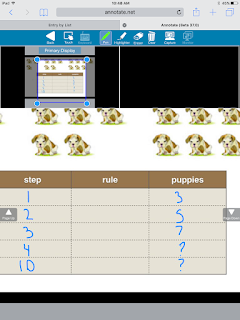There were many prompts to get this week's task going, and this one has hit me hard recently, and not just in math class: "Mr. Hulitt, can you help me?" Simple, right? Let's resume the convo:
Sure, what do you need?Many of our students want the easy way out. They have been programmed since school age to be robotic answer-finders. Give them a formula, tell them what numbers to use, plug it into a calculator, and bam(!), there's your answer.
I don't know what to do
What don't you know what to do?
Number 7
Ok, what don't you know about number 7?
I don't know what to do
The idea of learned helpless is plaguing our classrooms. Without the need to rehash posts from this, this and this, I will add that the Math Practice Standards aim to curtail learned helplessness and promote better thinking in class. Specifically MP1: Make sense of problems and persevere in solving them. I've found that low entry high ceiling tasks do this exactly. That's the beauty of Estimation180, Visual Patterns, and Which One Doesn't Belong. Also, Jo Boaler and NRich have more examples that expand this concept.
Have you used anything in particular? How did it go? Please share!











